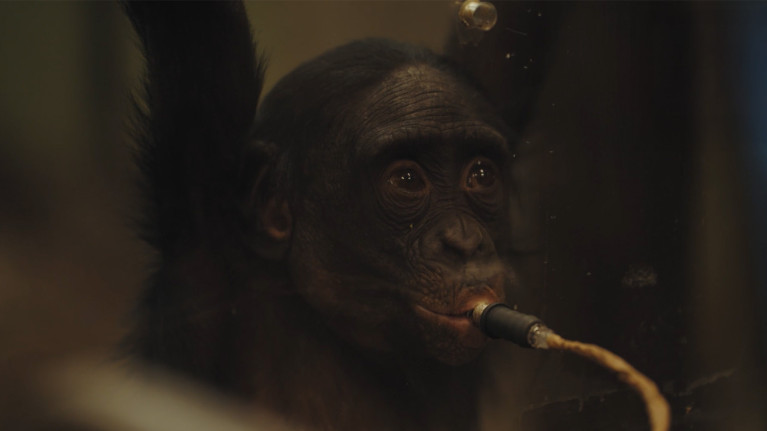Bonobos and Their Emotions
New eye-tracking study examines how emotions affect cooperation
A new study has been launched behind the scenes at Planckendael ZOO to learn more about the way bonobos focus their attention. Using eye-tracking technology, the research team aims to investigate the role played by emotions in cooperative behaviour among great apes.
The social structure in a group of bonobos is complex. Moments of care (such as grooming) alternate with situations involving competition or displays of dominance. It is precisely in these interactions that they exhibit their emotions most strongly.
. ‘We know that emotions play a key role in the social lives of great apes,’ explains zoologist Jonas Verspeek.
‘We are conducting this study to learn which behavioural cues bonobos are most responsive to. For example: do they tend to look at the animal doing the grooming, or the one being groomed? By answering questions like these, we hope to deepen our understanding of how attention to such cues supports cooperative behaviour and how this has evolved over time.’
Using Eye-tracking to Study Emotion
The study is carried out entirely on a voluntary basis: bonobos are free to choose whether they want to take part or not. ‘Those that are curious come a little closer and have a look. Conversely, if they are not in the mood, we simply leave them be,’ Verspeek continues. To motivate the animals, they are given juice as a reward. ‘Getting bonobos to sit still is no easy task. Because they can enjoy their drink while the study is being carried out – which gives them something to do – we can collect the information we need, and the animals associate the study with a positive experience.’

The study set-up uses a computer screen connected to an eye tracker. Short video fragments appear on the screen, showing social interactions between the bonobos, such as grooming. While the bonobos watch what is happening around them, the eye tracker records precisely where their gaze is drawn, revealing exactly which factors capture their attention.
‘The eye tracker emits infra-red beams that bounce off the back of the bonobos’ eyes and subsequently return to our computer,’ Verspeek explains. ‘This allows us to see precisely what the animals are looking at.’
Because the bonobos’ health always comes first, the researchers take strict safety precautions, such as wearing face masks to protect the animals from human viruses and bacteria.

The Reason for Conducting This Study
The aim of this study is to identify which behavioural cues bonobos are most responsive to in their social interactions. In a later phase, other types of behaviour will also be examined, including situations involving tension. The team hopes that tracking where the bonobos direct their attention will help them identify the cues that are most significant to them.
Comparing these findings with earlier research on chimpanzees and humans will result in a broader understanding of how emotions shape cooperative behaviour across different great ape species. ‘This comparison is crucial’, says Verspeek. ‘If we detect similarities in how bonobos, chimpanzees and humans focus their attention, we can assume that this pattern was already present in our common ancestor. On the other hand: any differences we observe will show us how varied the role of emotions in relation to cooperation can be – and which unique steps humans have taken in their evolution.’
The team will continue collecting data over the next few months, albeit gradually. Given that participation is voluntary, the study progresses entirely at the bonobos’ pace. Once sufficient data has been collected, the researchers will be able to conduct the first analyses, and we can look forward to the initial findings.

